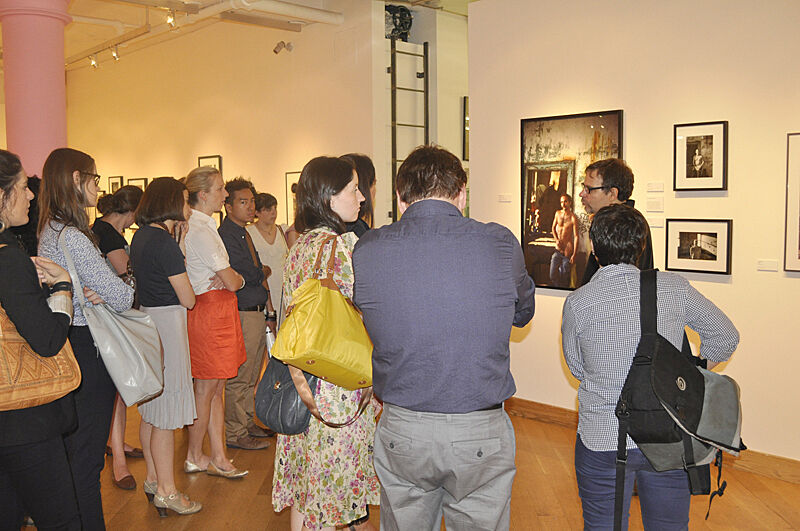Education Visits The Piers: Art and Sex along the New York Waterfront
Jul 12, 2012
On June 14, Education staff visited the Leslie-Lohman Museum of Gay and Lesbian Art to see their latest exhibition, The Piers: Art and Sex along the New York Waterfront, (April 4 – July 7, 2012), the first museum show to focus exclusively on the uses of the Hudson River docks by New York City artists. Between 1971 and 1983, the piers became a site and subject for photography, sculpture, video, and performance. Much of the work on view bore witness to the gay, lesbian, and transgender community that emerged in Manhattan before the AIDS epidemic.
Curator Jonathan Weinberg led the group through the galleries, and discussed the transformation of the neighborhood. Once an integral part of the city’s busy shipping industry, the piers below Fourteenth Street fell into disuse and ruin by the late 1960s. Nearly a decade later, artists such as Vito Acconci, John Baldessari, and Gordon Matta-Clark reclaimed these spaces for their art. The work on and about the piers challenged the more conservative definitions of ownership, privacy, and conventional sexual mores, and they continue to resonate with contemporary audiences.
Weinberg discussed Gordon Matta-Clark’s Day’s End (Pier 52) extensively. Making enormous channels and crescent-shaped cuts in the pier building’s walls and ceiling, Matta-Clark transformed the warehouse into an urban cathedral: the holes mimicked the effect of stained glass windows, casting constantly moving light and shadows throughout the interior. Pier 52 is located at the end of Gansevoort Street near the site of the Whitney's planned new building in the Meatpacking District.
While a sense of nostalgia permeated the galleries, the exhibition also drew our attention to the dynamism of New York neighborhoods which exist in a constant state of cultural, social, and economic flux. From the site of industry, to the center of gay subculture, and now to one of the trendiest areas in the city, Manhattan’s Meatpacking District seems to exemplify this phenomenon. The message was an especially poignant one for the Whitney group, as the Museum’s move in 2015 will undoubtedly contribute to yet another metamorphosis in the neighborhood.
By Liza Pisano, Education Intern

